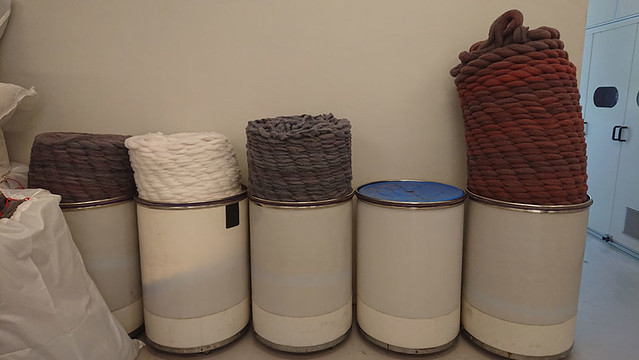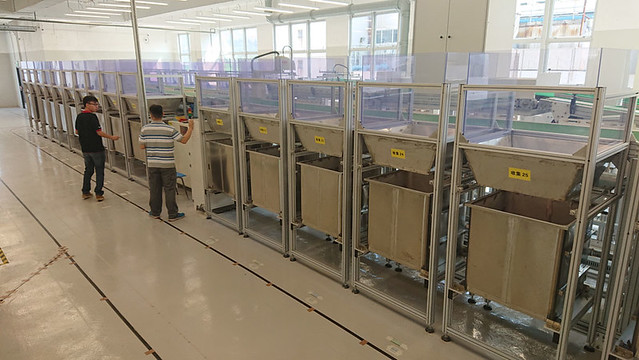
2018年10月初,長春社收到香港紡織及成衣研發中心(HKRITA)的邀請到訪龍達紡織(Novetex Factory)位於大埔的工廠了解舊衣回收再造的新技術。新技術「舊混紡織物升級再造的工業系統」及「用水熱反應處理方法分離和回收廢舊滌棉」以物理、化學及生物的方法將混紡衣物分解並拉成再造纖維,再將纖維製成紡織品,如紗線、布料及衣服。新技術能夠保持舊衣纖維的質量,將原有的大部份物料重新投入生產過程,從而減低原材料的需求及減少紡織廢料。舊衣亦先按顏色分類再作後期處理,故製成的再造纖維會分成不同顏色,不用重新染色。
製造一件新衣由種植棉花,製成紗線,編成布料,到車成衣服,當中需要大量水灌溉棉花、大量化肥及殺蟲劑種植棉花、多種有害化學劑印染衣服,造成的污染及資源消耗極大。而新技術將已有的物料循環再造,對污染及資源消耗盡量減少,意念上確是一個可持續發展的方法去處理舊衣。但新技術並非所有物料的舊衣都能處理,如裇衫、雨衣、羽絨等物料暫時未能處理,而且因物料的限制,製成的衣服主要是毛衣。
根據香港環境保護署的統計報告1,2016年香港棄置紡織物的量為343噸一日,回收的紡織物為4200噸一年,故回收率只達少於3.4%。而新技術每月最多可生產再造纖維約25噸,按最理想的數據計算,即使靠新技術回收及循環再造舊衣量達300噸一年(25噸x 12個月),亦未能夠處理香港一日的棄置紡織物的量。
我們觸摸過再造纖維及再造衣服的質地,觸感柔軟,款式亦與現時一般店舖出售的毛衣及冷衫沒有分別,加上經過雙重消毒,衣服的衛生程度亦沒有問題。唯現時出售再造衣服的零售店不多,而零售價亦未能吸引大部份市民,故即使有方法製造,亦未有需求,暫時未能取代速食時裝。
其實新技術只是其中一個回收方法處理棄置的舊衣,並不能長遠及大量地解決棄置紡織物的量。要減少棄置紡織物,最主要還是源頭減廢,有需要才購買,並學習綠色消費,擇對環境傷害較少的產品。
參考:環境保護署 (2016). 香港固體廢物監察報告 - 2016年的統計數字. 取自
In early October 2018, CA had been invited by The Hong Kong Research Institute of Textiles and Apparel (HKRITA) to visit the Novetex Factory, located in Tai Po, to know more about new recycling techniques for handling used clothes. The new recycling techniques, “Up-cycling Post-Consumer Blends Products” and “Post-consumer Blended Textile Separation and Recycling by Hydrothermal Treatment”, use physical, chemical and biological methods to separate cotton-polyester blends and recycle post-consumer garments into fibres. The recycled fibres can then be used to reproduce textiles products such as yarn, fabric and garments. The new techniques can help retaining the good quality and properties of fibres that can permit “fibre-to-fibre” recycling in order to minimize the demand of virgin materials and reduce disposal of textile waste to landfill. The used clothes have to be sorted by color initially in order to produce various colors of recycled fibres without dyeing.
Production of new clothes often cause immense amount of pollution and resources consumption due to the large amount of water, fertilizers and pesticides usage for cotton plantation and the massive amount of toxic chemical usage in the dyeing process. The new techniques can reuse the most resources from the used clothes that can minimize the pollution and resources consumption. Thus, the new techniques are sustainable development options for the used clothes recycling industry. However, the techniques are unable to handle certain kinds of clothes such as shirts, raincoats and down. Also, the clothes being reproduced are mainly sweaters due to the limitation of the materials.
According to the waste statistics in 2016 from “Monitoring of Solid Waste in Hong Kong”, the weight of textile waste disposal was 343 tons/day and the weight of textile recycled was 4200 tons/year. As a result, the textile recycling rate was less than 3.4% in 2016. The new techniques can reproduce approx. 25 tons of recycled fibres each month at the moment. Based on this capacity, the new techniques should reproduce 300 tons recycled fibres for a year (25 tons x 12 months), which only contributes to a small percentage of a single day’s worth of textile waste disposal.
The texture of the recycled fibres and clothes are soft and the design of the recycled garments is the same as the general garments selling in boutiques. Also, the recycled clothes are sanitized twice during production. However, not many retail shops are selling recycled garments as the costs involved are not as competitive in the local market. Thus, although there are methods to reproduce recycled clothes, the demand of the recycled clothes is relatively low and it surely takes time to compete with current fast fashion trends.
Actually, the new technique is just one of the many means to handle used clothes. Technology alone cannot solve the abundant amount of textile waste in the long run. There are always other efficient ways to reduce the textile waste nevertheless, such as only buy what you need and choose eco friendly products.
Reference: Environmental Protection Department (2016). Monitoring of Solid Waste in Hong Kong - Waste Statistics for 2016. Retrieved from





